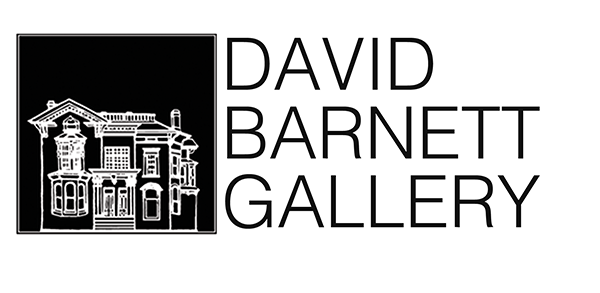Black Moon1960, original black and white lithograph, cat. raisonné M293
A rare original black and white lithograph (edition of 200), Marc Chagall returns to the Russia of his youth. He represents village peasants and their home in the foreground. It is in the sky that the whimsical and fantastic transpire. It is dominated by a black smiling moon that looks out at the viewer and that is a benevolent overseer of the scene. A hand reaches out from the heavens holding flowers. A garland of plants and flowers floats above the woman on the right, with a bird pictured in relief. Chagall renders the image in his own distinctive style, mixing modern art and Jewish folklore, in a childlike manner with elements of Surrealism.
Carte de Voeux1974, original color lithograph, cat. raisonné M731
This special color lithograph, a rare image with a limited edition of 200, was sent to Chagall’s closest friends. The lithograph depicts the likeness of his wife surrounded by a chicken and the rendering of a village. Here, Chagall represents the cosmos of his young life in Vitebsk, Russia (now Belarus) and conveys the special memories it held for him. With reference to the familiar tropes of life in the artist’s birthplace, there is a sense of nostalgia in this work befitting its intimate nature. Most recipients of this New Year’s greeting did not realize they were receiving a rare original color lithograph and threw them away!
L’Artist Phénix
(The Artist as a Phoenix)1972, original color lithograph, cat. raisonné M648
A color lithograph poster created for a one-man show at the Maeght Gallery in Paris. In this dreamlike composition, the artist represents himself as Janus-faced, two creatures in one. On the left side is the artist’s self-portrait, and on the right is an image of the phoenix—two combined heads—a human and a bird; and on top of both heads, a nude woman. The reference to the phoenix is regenerative: like the mythical bird, the artist rises from the ashes of his past creatively. On the left of the poster is Chagall’s blank canvas and scattered throughout are images from his past: the houses of a village, flowers, lovers walking together, and the nude which serves as a particular source of inspiration. This work demonstrates that Chagall composed his images based on emotional and poetic associations, rather than on rules of pictorial logic. The poster utilizes the dream-like imagery of Surrealism which the artist’s fantastical work prefigured.
L’Acrobate Vert (The Green Acrobat)1979, original color lithograph, cat. raisonné M946
Here, the artist presents a circus scene of an acrobat performing tricks on the back of a horse as a clown stands in the background. The artist, hearkening back to his early artistic career when he was influenced by Cubism, scatters colorful triangles and geometric shapes throughout the composition which was a departure from his typical fluid style. At this time, however, the artist was creating stained glass windows that utilized geometric panes of glass and influenced the unusual style of this work. This lithograph is notable for its lush, luminous color, for which Chagall was known. Indeed, in the 1950s Picasso said of Chagall: “When Matisse dies, Chagall will be the only painter left who understands what color really is ...”
Paradis (Paradise)
1960, original color lithograph, cat. raisonné M232/255
This work, printed by Mourlot and published in Paris by Tériade for Verve in 1960, is part of a special edition devoted exclusively to Chagall’s original Bible lithographs. Chagall was captivated by the Bible: “Ever since my earliest youth, I have been fascinated with the Bible. I have always believed that it is the greatest source of poetry of all time.” This image from the book of Genesis depicts Adam and Eve in the Garden of Eden before the Fall. Adam and Eve are lying down, their torsos joined, perhaps an allusion to Eve’s creation from Adam’s rib. The Tree of Knowledge stands behind them. As Adam sleeps, blissfully unaware of what will transpire, Eve has plucked a piece of fruit from the tree and dangles it from her hand. An angel hovers overhead as if in suspense. Chagall captures the moment before their original sin, while the pair remains in paradise.
